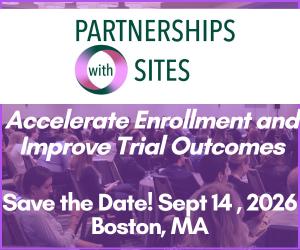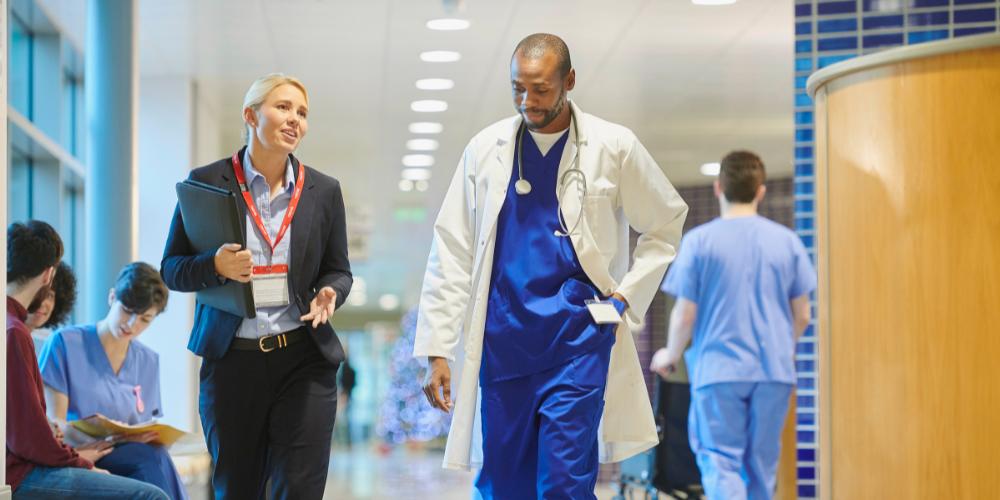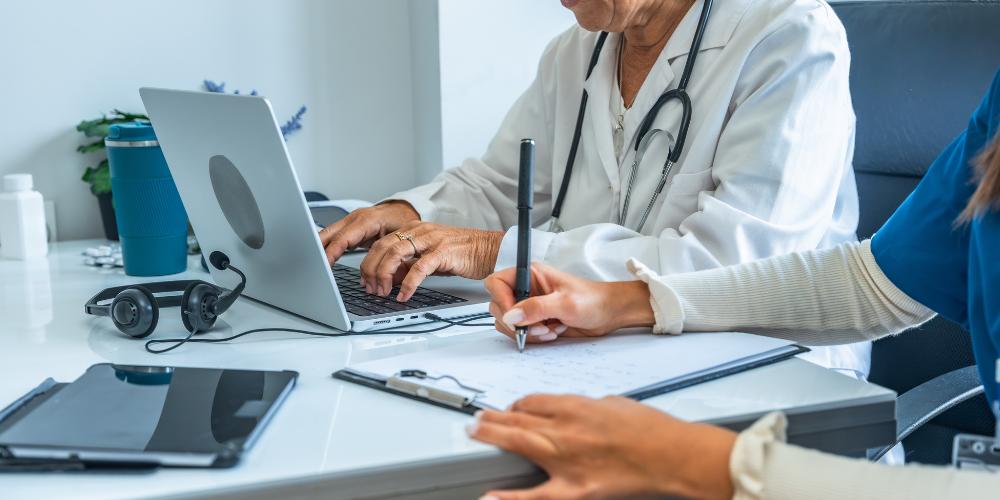Running Innovative Trials at Holy Name Medical Center During the Pandemic
Ravit Barkama, MD, MPH, highlights the reality of running community hospital clinical trials during a pandemic. Dr Barkama is the Assistant VP of Clinical Development at Holy Name Medical Center, responsible for the overall leadership, development and implementation of new healthcare entities and strategies.

How do you think the model of a centralized research institute benefits your hospital, especially during COVID-19?
The pandemic proves the beneficial characteristics of a centralized research institute. We shifted almost all of our research coordinators from other specialties to COVID-19 projects. Without a centralized unit, it’s more difficult to shift people during a time of need in an organized and optimal manner. We trained everyone together.
We assigned people to different tasks in each study. Some people were assigned to the remdesivir study, others to the Kevzara study. When there were less remdesivir patients and more Kevzara patients, we shifted staff to the busier project. There is much more control and optimization with a centralized research unit.
What was the process of integrating research with care as Holy Name faced COVID-19 challenges?
There was more unknown than known. Our doctors had an empty toolkit. It didn’t have drugs or biologic treatments. What we had at the time were a few publications from China showing preliminary data on medications. Not much information was coming out of Italy. We only knew that there weren’t enough ventilators for everyone requiring medical ventilation.
We needed to quickly fill that toolkit, knowing that we would be putting in tools that might make sense in terms of the pathophysiology or mechanism of action of the drugs, but would not have clear evidence of efficacy.
Early on, we started with Compassionate Use for remdesivir. Later, we joined the Expanded Access Program that Gilead initiated and then we joined the Emergency Use Program. We learned more about and assumed IL-6 inhibitors would be effective. Accordingly, we enrolled many patients into an IL-6 antagonist study with Regeneron.
We also collaborated with Pluristem, which provided us with placenta-derived stromal cells that we gave to a few patients here at Holy Name under the Compassionate Use route approved by the FDA. We were already actively enrolling into two Critical Limb Ischemia studies with Pluristem, so we were aware of the safety profile of these cells. We felt comfortable moving ahead and treating COVID-19 patients.
We didn’t know whether the cells would be effective or how they would affect the cytokine storm, but were hoping that the mechanism of action would reduce the hyper-immune response, which creates a lot of pulmonary harm.
When you try something and you don’t know if it is effective, you need to know that it’s safe. When you are trying something that you know is effective, you can determine if the risk-benefit ratio makes sense. For example, while chemotherapy is effective against cancer, it does not have a good safety profile, but obviously, it is widely used.
As we were learning about this virus and the disease – the cytokine storm and quick desaturation among patients – we learned about the various phases of the disease. The first few days are the viral incubation – about five days after someone is infected. Then there is the viral period with quick viral replication. Here we see flu-like symptoms as well as some newer symptoms such as loss of smell and taste.
After 10 to 14 days, we see the hyper-immune phase. The vast majority of patients do not progress to this phase; they are asymptomatic or do well clinically. However, a small subset deteriorates and requires various levels of oxygen supplementation. Some require mechanical ventilation and ICU level care. The last phase is the clearance, where patients, many intubated, eventually clear and show recovery of the lungs and other organs.
We learned that for each phase, we needed different treatments. We believe that in the viral phase, we should treat with antiviral drugs like remdesivir. Most patients in the US received remdesivir after they were intubated. At the end of the viral phase, you want to provide treatments that will reduce the hyper-immune reaction. Pluristem makes sense since it performs immune-modulation, and this might also be the place for IL-6 inhibitors, various JAK inhibitors and other cytokine inhibitors.
And at the clearance phase, you want to give treatments that help with healing the organs, such as stem cells or stromal cells, which are investigational.
"A pandemic clarifies, more than anything, how much research is a treatment option."
How do you maintain rigor and safety in clinical trials for different treatments during a pandemic?
A lot of things change when you look at this setup. You don’t want to bring a printed consent form to a patient, have them touch a pen and sign the consent form and then take the form and bring it to a non-contaminated area. As a result, you’re consenting verbally. When patients go home, you send them a consent form to sign. In the charts, we documented that we consented them, answered their questions and gave them information about potential benefits and risks. We believed that it was right to give the majority of investigational treatments as early as possible to prevent the patient from deteriorating.
If the research unit usually worked five days a week, we started working seven. The weekend of May 16-17 was the first weekend that nobody from the research unit worked since March 13th.
How do you explain these clinical trials to patients in a way that makes the research accessible?
Patients often don’t know what a “cytokine storm” or “IL-6” are. You need to explain the potential natural course of the disease and why we are offering them these drugs. It must be done in a way that the patient can fully comprehend. We were giving these investigational drugs in the emergency department to patients having more and more trouble breathing, desperate to be treated. Some patients don’t have the patience to listen, but you still need to consent them properly. It’s like oncology patients with metastases. These patients want something investigational. We barely had anyone say no. However, we could not take advantage of that tendency to say “Yes, doctor, whatever you want to give me.” You still need to do a good job of explaining the treatment and obtain an informed consent.
"Now that everyone understands that diabetes, hypertension and obesity are bad prognostic factors, there is an opportunity for us to better fight these very common diseases."
How do you engage with non-research-oriented physicians and clinicians in investigational drugs?
Most of them wanted to become research-oriented very quickly. Those who did not have GCP training, went ahead and got certified. Until they were trained, we had other physicians consenting and following their patients. Eventually, all of the relevant doctors were trained on the various protocols.
We received total buy-in from the medical staff and the nurses. It was clear that research enabled us to provide treatments to our patients. treat patients efficiently. We moved quickly, knowing that we weren’t going to be able to purchase medicine with proven efficacy.
How have you managed your other ongoing non- COVID-19 trials?
People are afraid to come and are afraid to leave their homes. We continued to enroll into various cancer and MS studies, but at a slower pace.
We worked with the sponsors and used telemedicine for follow-up visits. There were certain patients whom we sent home-health nurses to see. Everyone understands that during this time, you need to be creative and flexible. It’s better to have a phone call to talk to the patient and get their history and see how they’re doing, rather than not having any input because a patient cannot come in.
Where do you see clinical research as a care option moving once this is all over?
It won’t be over soon. A pandemic clarifies more than anything how much clinical research is a treatment option. For a very severe disease, where you don’t have evidence on what works and what doesn’t, research is the basis of all treatment. I think that there is now a greater understanding and buy-in among the public and medical professionals about the importance of clinical research.
Now that clinical research has improved its perception and prestige, it’s a great opportunity to move forward with other indications and enhance it further. Perhaps even among the community itself, like physician practices and skilled nursing facilities, this might be an opportunity to try to engage them in research.
We need to continue to leverage what we do, make medicine more efficient and move forward by taking the treatments of tomorrow and giving them today through well-designed studies – for both COVID-19 and non- COVID-19 indications.
There is a very positive force now and it would be a shame not to use that momentum. Now that everyone understands that unbalanced diabetes, hypertension and obesity are bad prognostic factors, there is an opportunity for us to better fight these very common diseases. There is more public understanding that these affect not just morbidity but also mortality. We can improve research by getting more people with diabetes, hypertension and obesity to try different drugs, as well as programs for healthier lifestyles.
The sky is the limit. What will we, the healthcare community and patients, do to make it work?
To learn more about Clinical Research as a Care Option, visit CRAACOevent.com.






